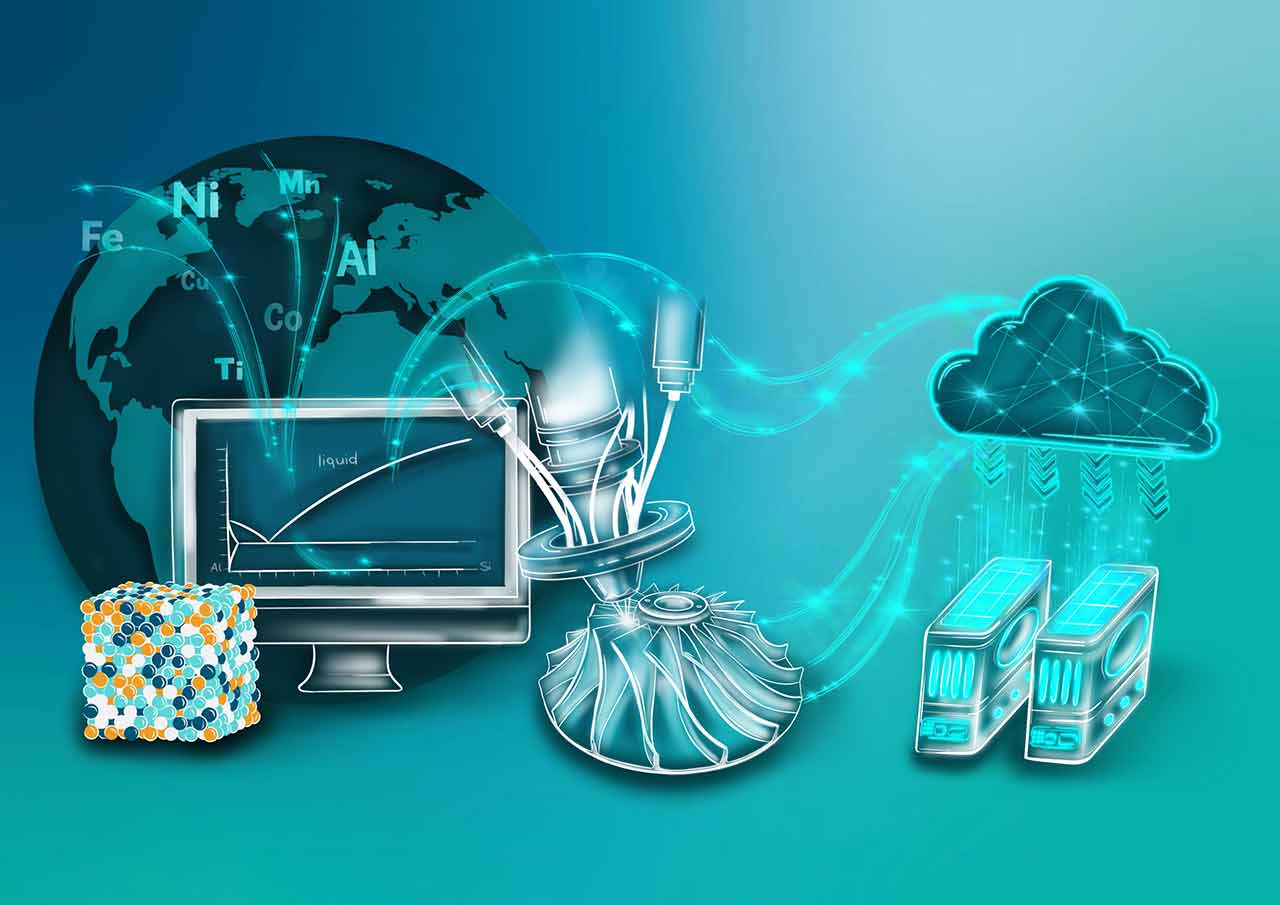Digital Ecosystem for a Resilient and Sustainable Supply of Functionally Reliable Materials (ORCHESTER)


Motivation
With the lighthouse project "ORCHESTER", we are establishing the Fraunhofer-Gesellschaft as a key player in coordinating the efforts of industry, associations, politics and research in the supply of structurally and functionally reliable materials for the energy transition. As an interdisciplinary consortium, we combine experimental, simulation-based, process, sensor and digital technologies to create a digital ecosystem that provides integrable solutions for assessing the resilience of materials, components and structures and enables recommendations for action based on a digital knowledge base. The project is motivated by the increasing challenges of raw material availability and the latest strategies for raw material recycling.
With the high-throughput methods for accelerated material screening, the Fraunhofer IWS is making a significant contribution to achieving the defined goals.
Aims and Approach
The collaboration between the "Material Characterization and Testing" and "Additive Manufacturing" departments, which has been successfully implemented in previous projects, will be further refined within "ORCHESTER" with the aim of combinatorial material design that seamlessly integrates digital and experimental methods. This allows possible scenarios to be mapped on a laboratory scale, including batch fluctuations, necessary alloy adjustments or the effect of repeated recycling routes on the respective material state. The activities at Fraunhofer IWS focus on bipolar half-plates made of 316L austenitic steel as an example. A high nickel content is essential to ensure phase stability, mechanical strength and resistance to hydrogen embrittlement. Nickel is the price-determining element for stainless steel and stainless steel scrap. Given the anticipated resource criticality of nickel, manufacturing these components from 316L within the existing material specifications may not be feasible in the event of a possible political crisis. This risk can be mitigated conceptually:
- If possible alternative materials with lower amounts of critical elements are found quickly with the help of linked data and "high-throughput screening" methods in terms of chemistry and processing
- When materials are no longer specified in narrow alloy limits and process routes, but from the outset in functions and properties such as strength, corrosion resistance etc.
Innovations and Perspectives
Another focus of Fraunhofer IWS is the issue of controlling the material functionality with a variable proportion of secondary metals and their impurities using the example of an aluminum alloy, such as those used in compressor wheels, fuel cells or heat pumps. Here too, the high-throughput screening methods will be used to simulate an alloy design on a laboratory scale. In this case, the aim is to induce increasing impurities quasi intentionally through targeted variation of the AM powders and to investigate their effects on further processability, required heat treatment strategies and long-term strength.
 Fraunhofer Institute for Material and Beam Technology IWS
Fraunhofer Institute for Material and Beam Technology IWS